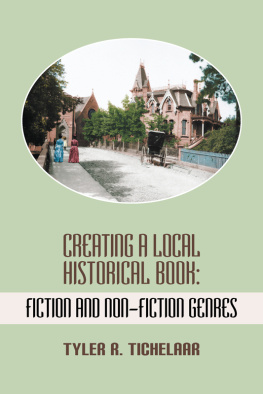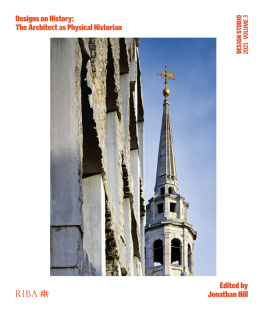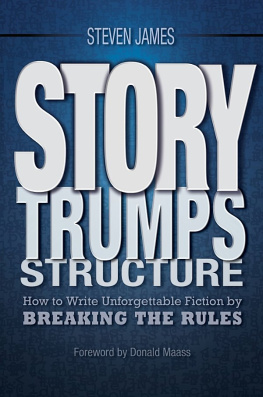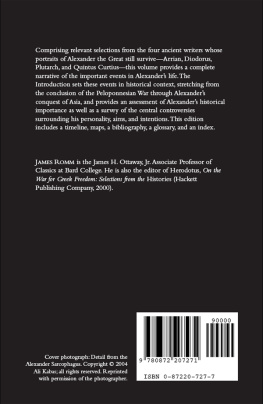Contents
Pagebreaks of the print version

Once Upon a Time It Was Now
The Art and Craft of Writing Historical Fiction, Second Edition
Copyright 2010, 2017 by James Alexander Thom
Published by Blue River Press
Indianapolis, Indiana
www.brpressbooks.com
Distributed by Cardinal Publishers Group
Tom Doherty Company, Inc.
www.cardinalpub.com
All rights reserved under International and
Pan-American Copyright Conventions.
No part of this book may be reproduced, stored in a database or other retrieval system, or transmitted in any form, by any means, including mechanical, photocopy, recording or otherwise, without the prior written permission of the publisher.
ISBN: 978-1-68157-051-8
Cover Design: Scott Lohr
Cover Photo: Marzolino / Shutterstock.com
Editor: Dani McCormick
Printed in the United States of America
23 22 21 20 19 18 17 1 2 3 4 5
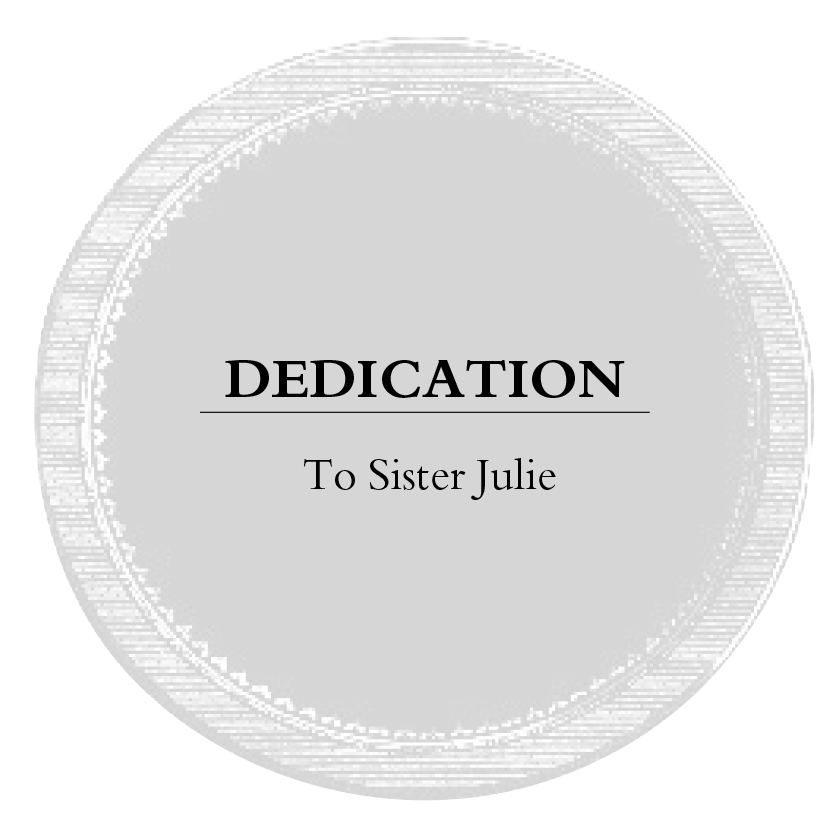
TABLE OF CONTENTS
Preface
ONCE UPON A TIME IT WAS NOW
They got married and lived happily ever after.
There! Ive always wanted to start a book at that end. And Ill finish it:
Once upon a time.
I certainly can do that: play with time, switch a story end-to-end, see the past and the future simultaneously, predict yesterday and forget tomorrow.
Having spent most of my career as a historical novelist, Ive developed godlike powers over the dimension of time. That is, godlike as in Janus, the Roman god with one face looking forward, the other backward. January, the doorway between last year and next, is named after Janus. To me, Janus is the personification of historical perception.
Janus-like, I might write: They will live happily ever after ... until the divorce.
For, you see, a career spent writing in historical time about real people and events has convinced me that there are more happy beginnings than happy endings. But, happy endings arent as essential to good storytelling as most people think. Stories with unhappy endings can teach and inspire just as well as those ending happily ever after. And usually they work better, because theyre more true to life.
In this book, I will compare historical novelists with historians. The two are much alike; both tell stories of the past. But the historians viewpoint faces backward only. He is limited to looking back in time; the historical novelist is not. Limited only by imagination, a historical novelist can go wild with time, just as wild as any science-fiction writer.
For example, one day, long ago, I picked up a science-fiction book that began, Once upon a time, there will be .... And it went on from there to tell a story set in the future. That was a delightfully playful opening, and an understandable sentence like something the god Janus might say. At the time, I wished Id thought of it.
In my long career in this historical fiction business, though, Ive found that the most effective storytelling concept is this:
Once upon a time it was now.
That has become my credo and my method as a longtime historical novelist. Its quite simple, if you see as Janus sees:
Today is now.
Yesterday was now.
Tomorrow will be now.
Three hundred years ago, the eighteenth century was now.
You, as a historical novelist, can make any time now by taking your reader into that time. Once you grasp that, the rest is just hard work.
Stay with me, and youll see how such work is done.

O nce upon a time, just a few months ago (a time we then thought of as now), the mother of a teenage girl lamented to me that her daughter simply was not interested in history. Not through school, History Channel programs, movies, old photo albums, or even the most earnest family conversations could the girl be roused to the least level of enthusiasm for anything concerning history.
In exasperation, the mother sat her down and asked her to explain her antipathy toward something as important and fascinating as history. The girl rolled her eyes, sighed, shrugged, and finally exclaimed: Because Im not in it!
What a telling statement! Of course! Not only is history taught in dull ways, full of dates and meaningless names and places shes expected to remember and might be tested on, its utterly irrelevant to her because she hadnt been born yet! She said a mouthful in that explanation.
Or, maybe she meant she wasnt recorded in MySpace or Facebook. Maybe her schoolmates hadnt texted each other calling her a geek or a slut. Maybe thats when history begins for young persons of today: when they are mentioned online.
But she was wrong to believe shes not in history. She didnt understand that she is a part of the historical story; she just hasnt yet caught up with the place in the story where shes been born. Her ancestors, or her American forebears who founded the country she now lives in, are the earlier chapters of that same story in which shell appear soon enough. She is the result of that earlier history, the outcome of those people and what they did. They are part of her.
She and they are all part of the same story. The story of the world, of America, of any community or institution or family, flows like a river, and we are all in itsome of us dead, some old, some young, some as yet unborn. Some of us are upstream; our ancestors are farther downstream; our young or yet unborn descendants still farther upstream. The River of History has countless tributaries and constantly comprises everything that flows into it.
The schoolgirl is in the River of History. She just doesnt feel immersed yet.
UP TO HERE IN HISTORY
Some of us are fortunate enough to feel ourselves immersed in the flow of history from a very young age. Personally, I have always felt that Im in it, clear up to here.
Im old enough that I can remember direct ancestors and old relatives who were veterans of the Civil War and the Spanish-American War. I remember their faces and their voices and their smells of tobacco, whiskey, farmyard, liniment, and the plain smell of old working men in the days before people used deodorant. I remember as a small child going to their funerals, their honor guards standing by, frail and white-bearded in their blue Union army uniforms. Such memories connect a child with the river of history, because a family shares the stream of another river: its blood.
My namesake was killed in the Civil War at Fredericksburg. A great grandfather survived the hellish prison camp at Andersonville. His grandson, my father, served in the army in both world wars. Less than ten years after my father returned from the Pacific, I crossed it, going to Korea on a Marine troopship. Bloodlines are another kind of current in the River of Time, and they carry other streams of connection, such as soldiering, or family trades, or religious and political traditions, or fraternal orders and so on. In some families more than in others kinship bonds and behavioral traits are so strong that theyre seldom out of mind. Not to mention family feuds. Many families in modern America are still divided by the Civil War.




